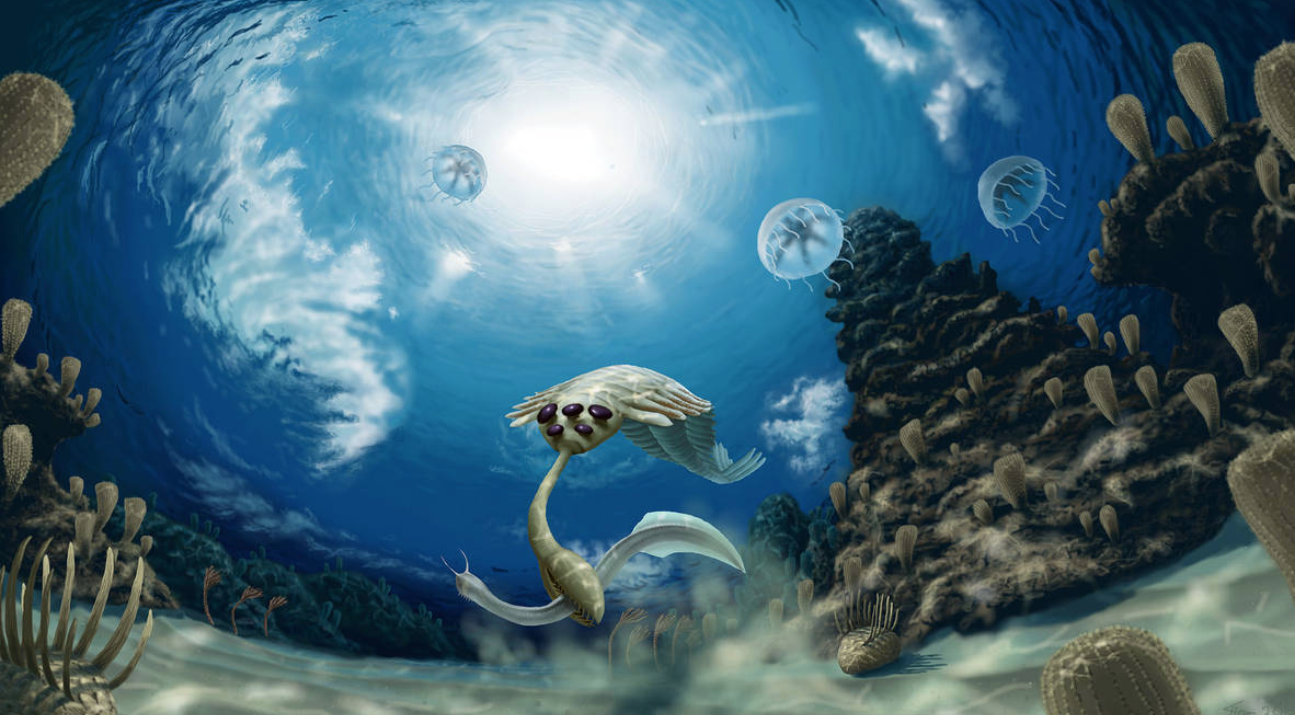Cambrian fossils
The Cambrian Period (538.8–485.4 Ma) saw the unequivocal appearance of most of the animal phyla known today: from sponges to chordates (the group that includes humans), arthropods to molluscs, annelids to echinoderms… This sudden radiation is known as the Cambrian ‘explosion’, which started at the beginning of the period and lasted for about 20 million years.
The most informative fossil localities are known as Konservat Lagerstätten, and they not only preserve the shells, carapaces or bones, but also preserve evidence of the soft parts, like muscles, skin, guts and even blood vessels and nervous systems.
The most famous ones in the Cambrian are the Burgess Shale (Canada) and Chengjiang (China), and Australia has the Emu Bay Shale in Kangaroo Island, the most diverse Lagerstätte in the Southern Hemisphere. It is dated between the older Chengjiang and the younger Burgess Shale, at ~512 Ma.
(Text: Tory L. Botha and Diego C. García-Bellido, UofA and SAM)
